Rookery: From the Observation Deck
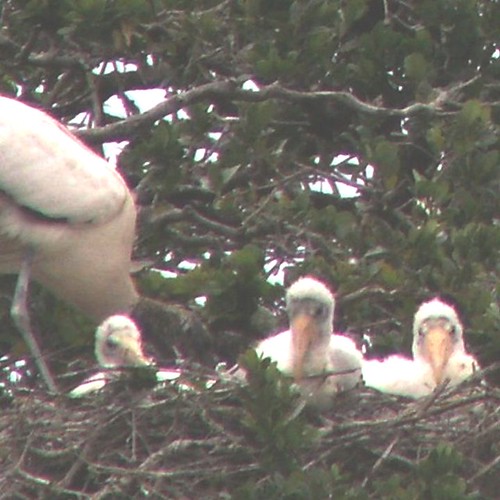
Wood Stork hatchlings and parent. Sometimes I use PowerPoint (business presentation software) as an assist to my zoom. For some reason, it creates less pixilation than either MS Paint or MS Photo Editor when I enlarge my photo images. Still, you can see a bit of pixilation here from the "stretching."
By far and away the highlight for me of our trip was the St. Augustine Alligator Farm and Zoological Park's rookery. A comment left on Flickr prompts me to say this: the close-ups here were all taken with a 12x optical zoom, from a boardwalk set above an alligator-filled swamp. Anyone trying to get too close to the nests would have become a fine meal for the reptiles below.
The birds were free to come and go as they pleased. On our approach to the farm (Mary and I walked there from our hotel) I spotted a wood stork flying out of the park and across Anastasia Blvd. in search of nest-building materials.
The alligators are, in effect, bodyguards to the birds, protecting them from predators....
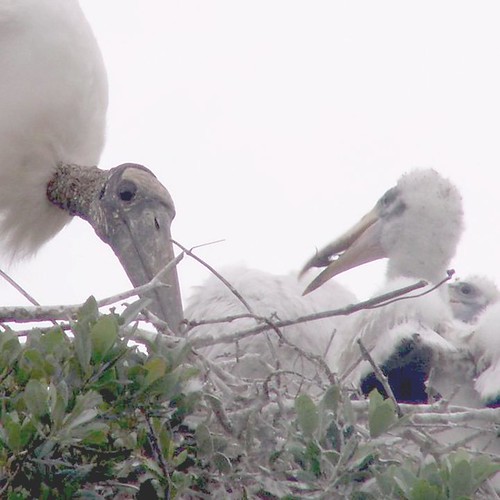
Wood Stork (Mycteria americana) and young. Says the University of Georgia's Savannah River Ecology Laboratory, "Wood storks are the largest wading birds that breed in North America; they nest 60 feet off the ground in cypress trees in wetland areas of Georgia, South Carolina and Florida. Only three other species in the world are similar to wood storks; two live in Southeast Asia and one in Africa."
Wood Storks were listed on the U.S. Fish and Wildlife Service's Endangered Species List in 1984. Between the 1930s and 1980, development, habitat destruction, and other factors had reduced their population from more than 60,000 to about 4,500 breeding pairs.
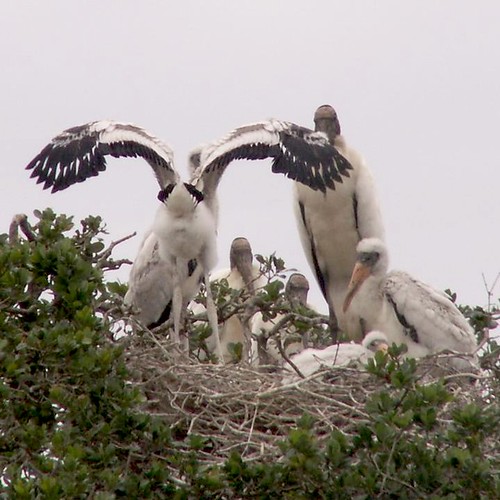
The trees where these storks nest (and, below them, Great Herons) are set well back from the boardwalk's observation deck, which is outfitted with a magnifying viewer. They comprise my most distant shots of the lot.
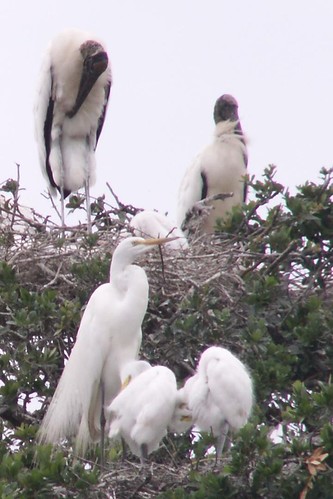
Wood Storks are up top. Below a Great Egret (Ardea alba) stands guard over her chicks. The Great Egret can be distinguished from the Great White Heron by the color of her legs: black instead of the heron's yellow.
According to the Cornell Laboratory of Ornithology, "the Great Egret is found across much of the world, from southern Canada southward to Argentina, and in Europe, Africa, Asia, and Australia. It's the largest egret in the Old World, and thus has garnered the name Great White Egret. But in the Americas, the white form of the Great Blue Heron is larger and warrants that name. In the United States, the Great Egret used to be called the American Egret but that was hardly appropriate, since the species range extends beyond America and indeed farther than other herons....Plume hunters in the late 1800s and early 1900s reduced North American populations by more than 95 percent. The populations recovered after the birds were protected by law. No population is considered threatened, but the species is vulnerable to the loss of wetlands."
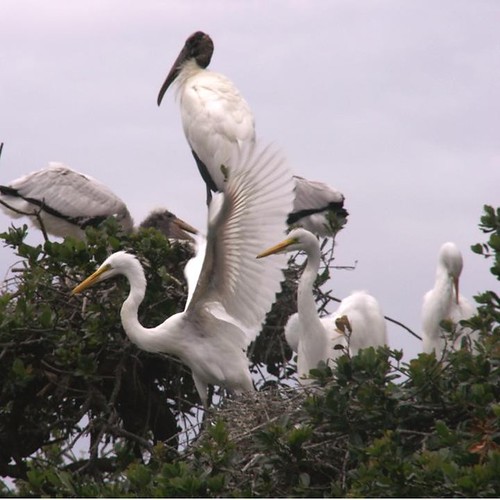
More Wood Storks and Great Egrets.
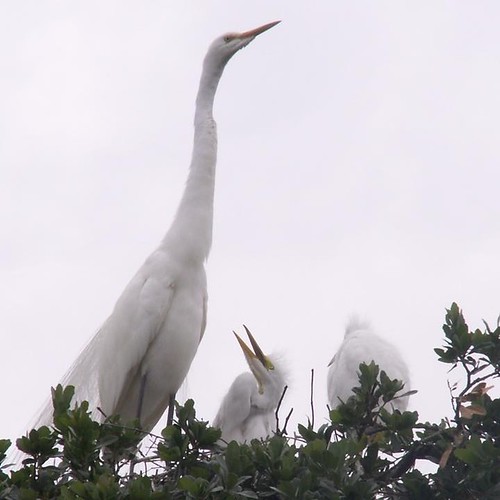
Great Egret and young.
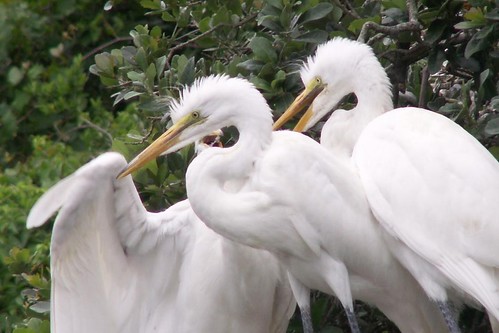
Great Egrets.
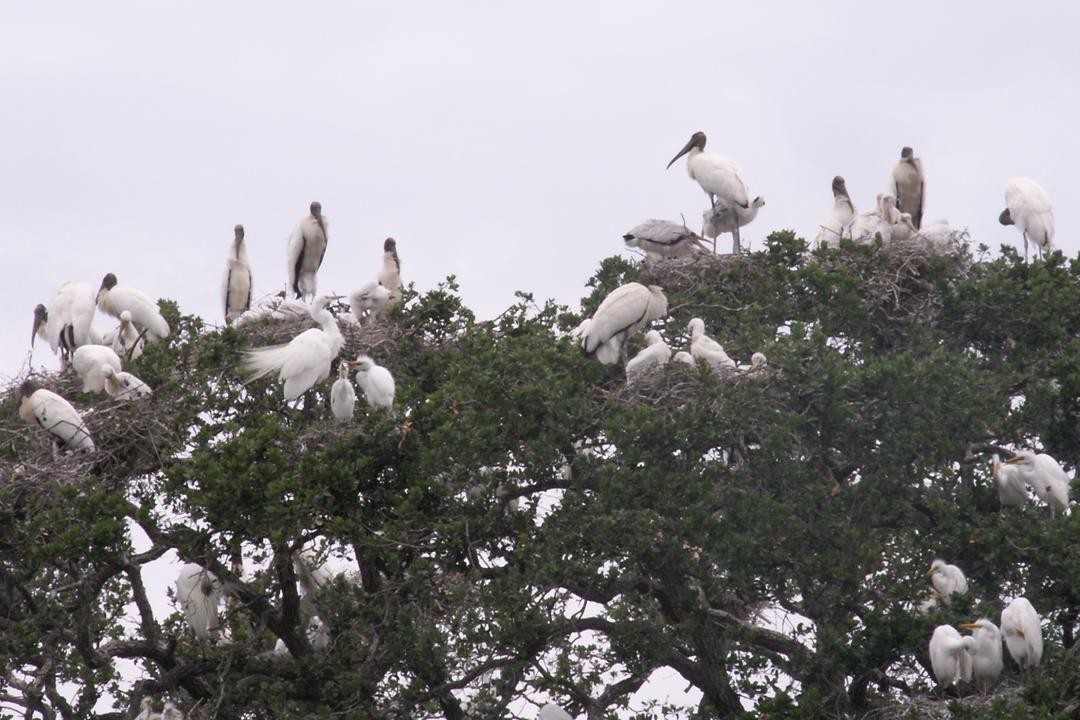
Storks and Egrets, wide shot.
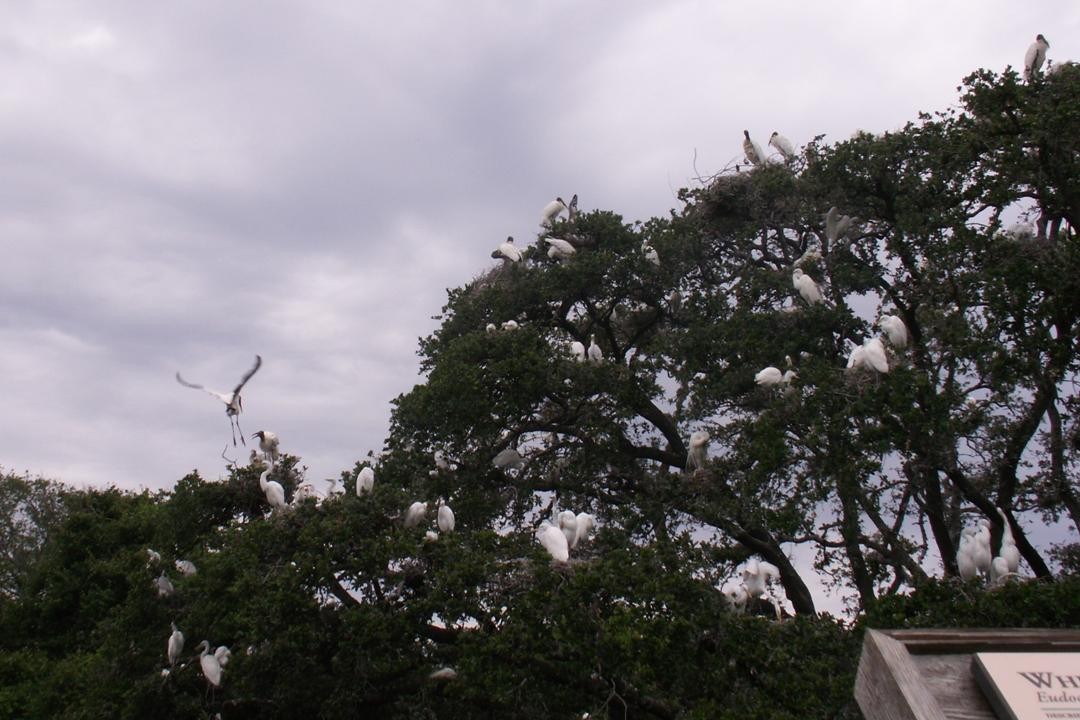
I believe this shot was taken without any zoom, judging from the portion of park plaque at lower right. The bird in flight is a wood stork who, during the estimated couple of hours we were there, kept flying back and forth, bringing material to the nest.
Next: Shots from further down the boardwalk.











0 Comments:
Post a Comment
<< Home